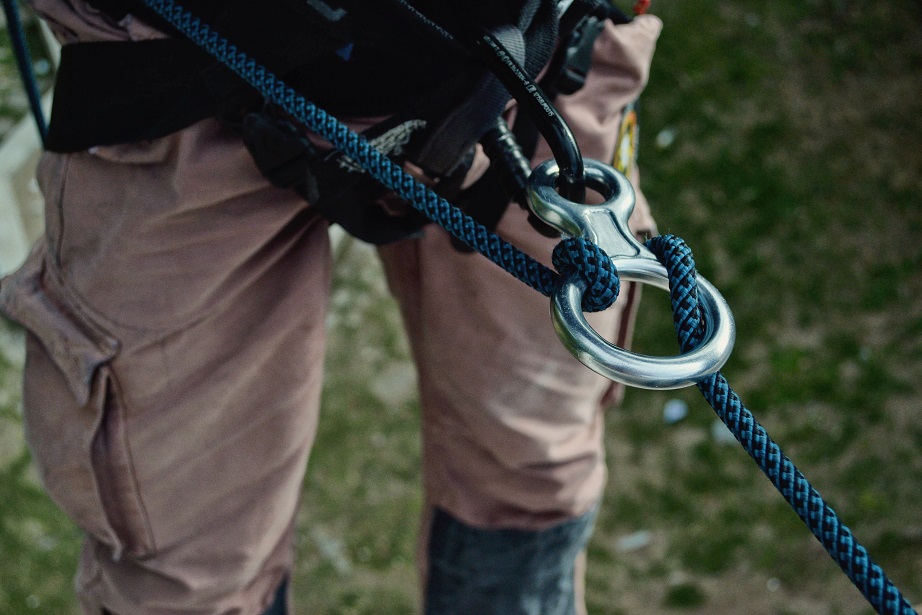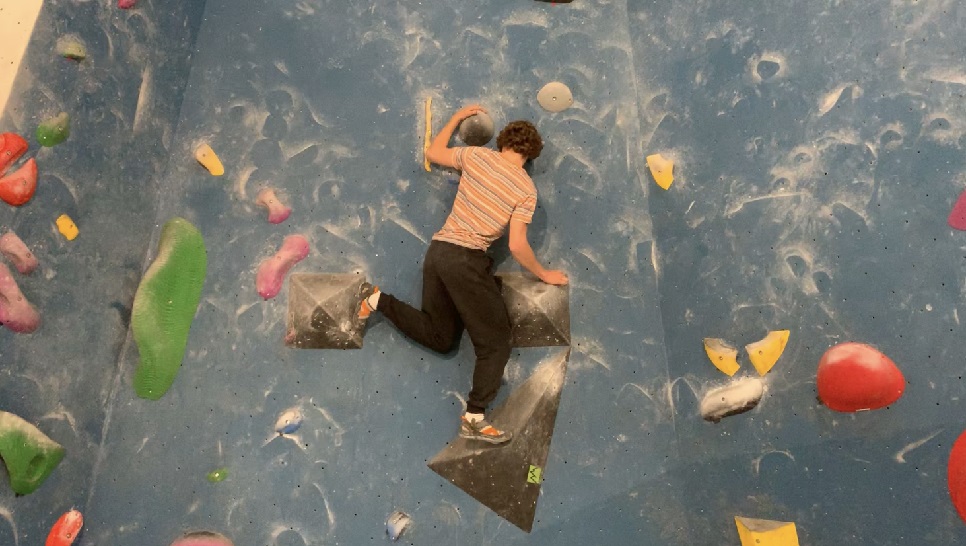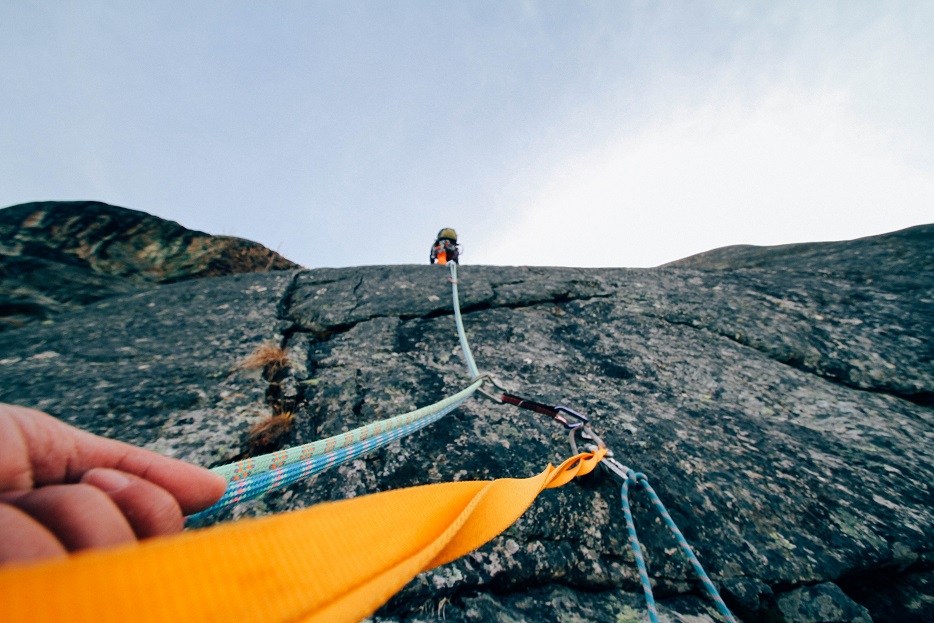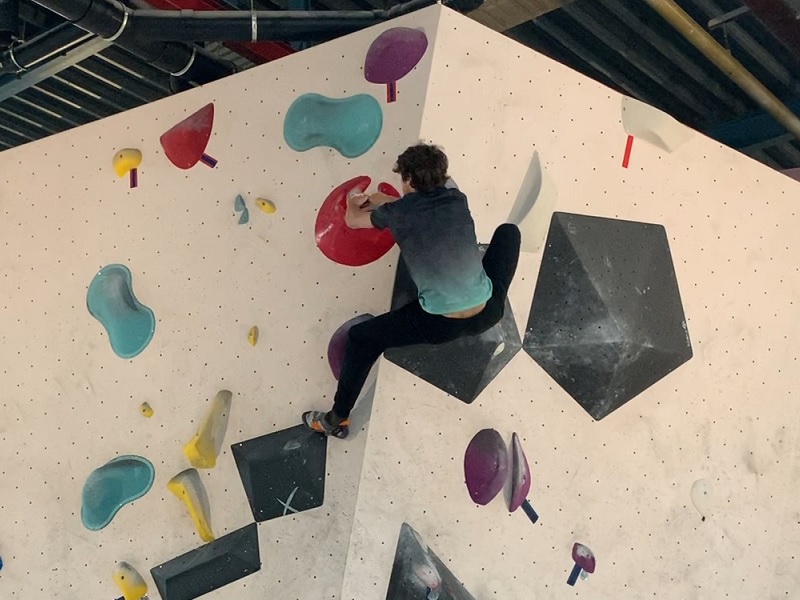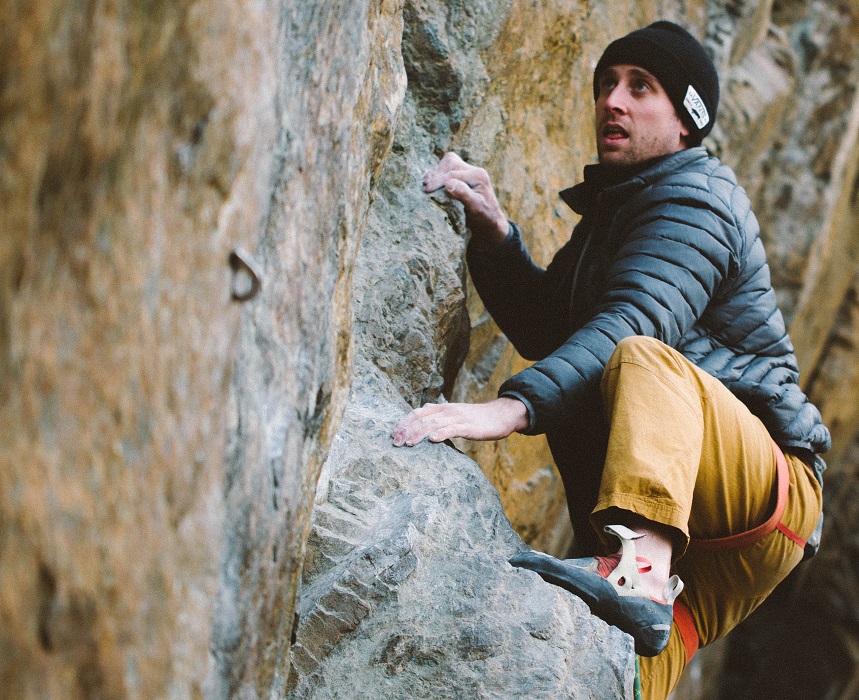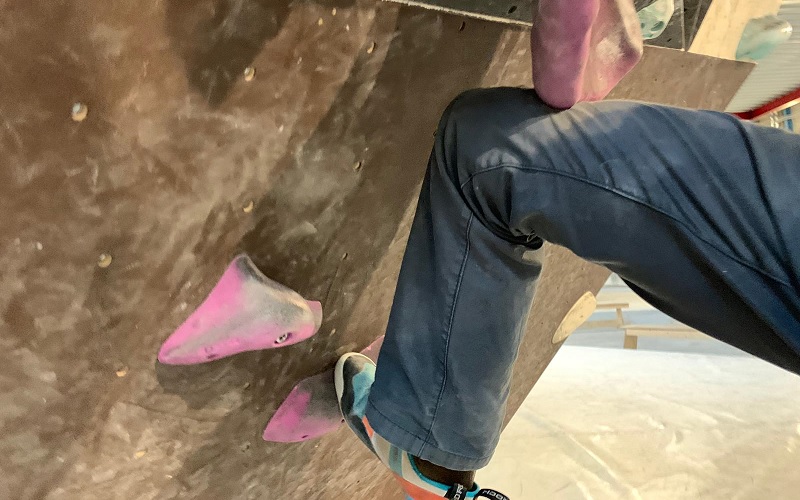Are you bouldering or climbing zealously to get ready for your first mountain climbing trip?
Before you set out on your mighty adventure, slow down young Padawan!
For you might want to know some useful gripping techniques first. By knowing them, you can make sure you get a good grip on every hold you’ll encounter and it will help you to prevent injuries.
Sitting down and reading about climbing might not seem to be the best way to improve your climbing, but I’ve found that reading up on some climbing techniques has really improved my performance in climbing.
Every rock climbing movement is based on using your hands and feet appropriately and preferably having four points of contact with the rock surface. In this article we’ll talk you through one of the various ways in which you can get your hands to stick to the rock like glue.
Today, I’ll tell you everything you need to know about crimp grips, especially useful for face climbing. This post will help you learn to get hold of (not sorry) the different crimping gripping techniques.
Ready to postpone your next mountain climbing trip for a moment or two? Here we go!
Crimp grips:
There are many kinds of handholds. For each of these, some grips are more desirable to use than others. Not gripping handholds correctly, prevents you from becoming the best climber you can be. While climbing, every rock that you encounter needs to be gripped by different hand position.
There are various types of rock faces: like rounded slopes, flat edges, pockets or blocks; and each face requires you to have a different grip.
Crimping means to grab small edges with your fingers bent at your middle knuckle. The thumb can be folded over the top of your index finger to enhance your maximum pulling power. Small incut edges and flakes are climbed over mostly by the help of crimping grips.
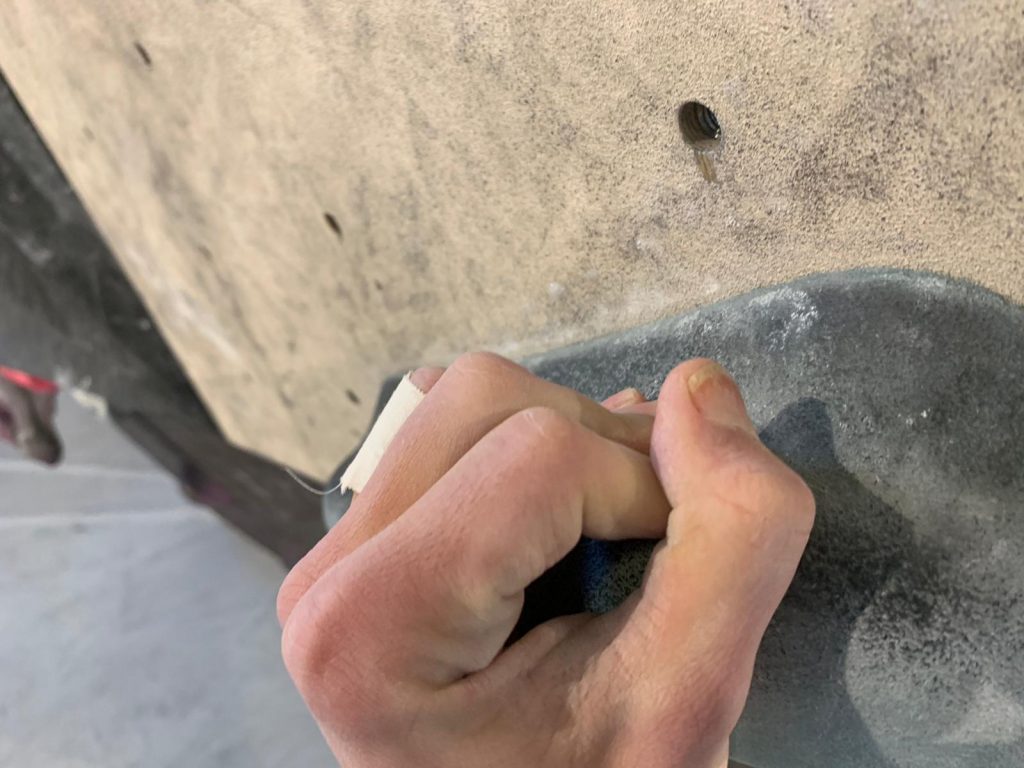
Though crimping will definitely help you summit mountains, crimping is very hard on the fingers. Finger injuries can easily occur while crimping, as it places most pressure on the tendons and finger joints. Therefore, you need to know its risks and limitations to avoid any accidents.
- Using crimp grips on narrow edges:
Full crimp grips are most commonly used on handholds that have a little recess or incut. You can also use them on handholds that give you an area to dig your fingertips in, or on squarely cut holds. These holds are mainly found on limestone and granite cliffs.
- How to do it:
To execute a full crimp, you need to place the fingertips’ pads on the hold’s edge and then fix your second joint by curling your fingers. Secure your crimp by pressing your thumb on the fingernail of your index finger so that it locks in place. By doing the thumb lock, your pulling power vastly improves and your crimp grip becomes stronger and powerful.
It’s really quite magical when you do it for the first time!
- Avoid injuries:
Unfortunately, you should only use the full crimp grip when it really is necessary. this way you’ll avoid long term injuries to your muscles, joints or tendons. Continuous crimping will have a damaging effect on your fingers and, in extreme cases, ultimately on your climbing career. So be warned, because we don’t want you to waste your chance at free soloing El Cap, now do we? 😉
If your finger is tweaked from climbing, rest for as many days as it takes to get better. According to some, you shouldn’t even use crimp grips at your climbing gym at all(!). So try to think of it as your ‘nuclear option’, that is usually best safed for later.
- For which holds and edges does this technique come in handy?
A crimp is really small edge, which can be large enough for
just the pad of your fingers. If you can get your body weight really close to the face, you will get a better angle to hold this edge. Combine it with the crimp, and you’ll be able to stick to it.
Half crimp grip:
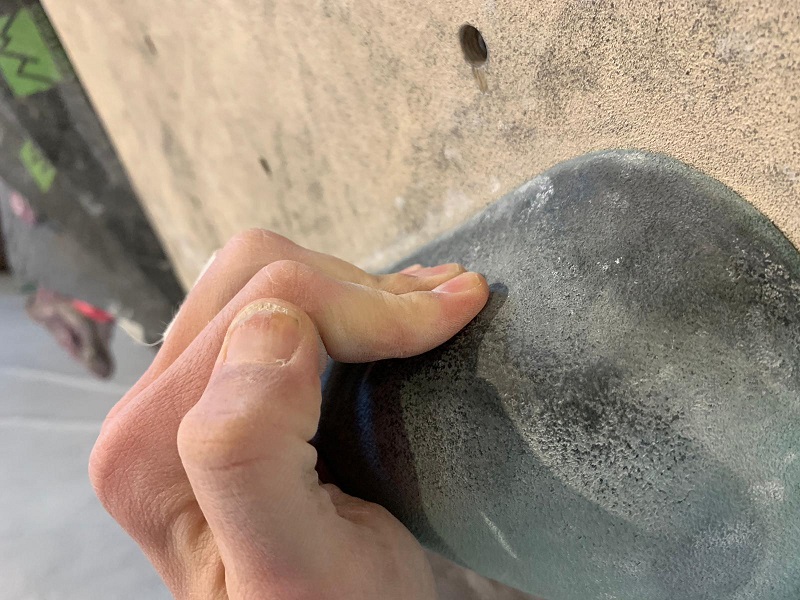
The main difference between the half crimp grip and full crimp grip is that the thumb of your hand will not lock on to the top of the index finger once you place your hand on the edged handhold. Other than that, it is the same grip used for small handholds while climbing.
- Weaker crimp grip:
After all these warnings, you’ll be happy to know that half crimp grips are more ergonomic, comfortable and stressless than full crimp grips. They are, however, weaker grips than the full crimp grips.
This is because the thumb does not press downwards, which makes it harder for you to maintain your grip as you pull yourself upwards. Nevertheless, half crimp grips are used in the same places where you could use full crimp grips: so at narrow edges, where the pads of most of your fingertips can rest easily.
- Avoid injuries:
In order to avoid injuries, you should use the half crimp grips instead of the full crimp grips wherever possible.
You’ll keep your fingers happier that way, trust me. Half crimp grips use hand and forearm strength in addition to friction to let you hang onto the sloping handholds. This is opposed to full crimp grips, which put immense pressure on the finger joints and tendons.
You can get better at half crimp grips in the climbing gym by practising them on lower difficulty routes. It’s always better to do more easy climbs, than less really difficult ones. As a rule of thumb, just don’t overdo it, so you can come practise the next day again.
Open hand grips:
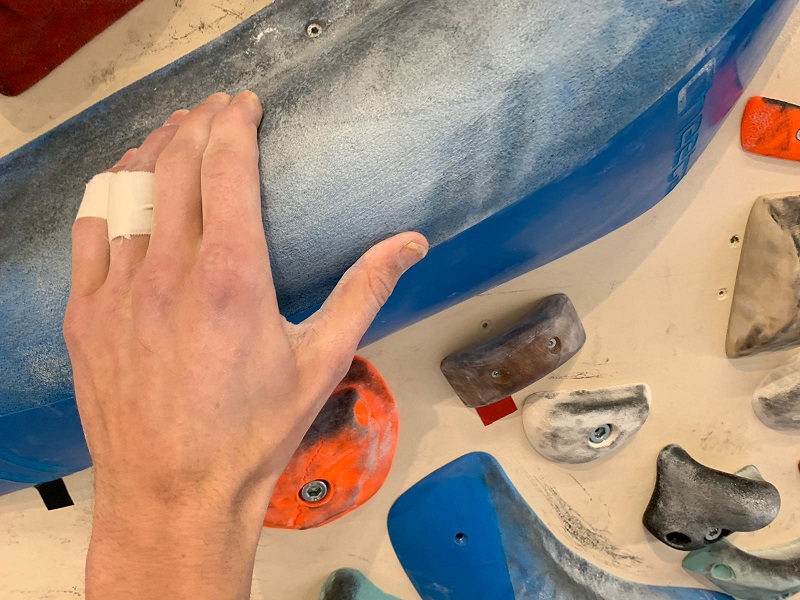
Open hand grips are done by using the handholds with stretched fingers and while the middle part of your fingers are kept straight. This position is less stressful on your bones as you keep most of your joints straight.
The best place to use open hand grips is for the purpose of grabbing slopers as it provides you more surface area on the fingers to get hold of the sloping edge.
It may seem to be the weakest finger grips of all, but that’s not necessarily true. The friction an open hand can provide on slopers makes for a nice grip. Even if you use it on edges you can still make it one of your most used and strongest grip styles. Just train, train, train.
- Which muscles are being used in this technique?
In the open hand crimps, your fingers have to endure more stress and so do your shoulders. When you have to grip a hold in your next move, this puts a lot of pressure on your shoulder and fingers.
- How to avoid injuries?
If you are planning to use full crimp in your next rock climbing then keep in mind that an open hand grip can develop the risk of fingers injuries which if you are not going to take care will never heal completely. It is better to use the open hand crimp in the case where no other technique can work. And it will be beneficial to use this technique after having proper practice on artificial walls. You can use this technique on narrow edges. And if there occur any kind of fingers injury, do not be careless and force yourself to at least take some rest.
Closed grip:
The closed grip is defined by the hyper-extension of the first knuckle of your hand. Since the hands are naturally able to bend inwards, the closed grip calls for an upward push over the fingertips so that the knuckles are bent in the opposite direction. They are sometimes explained as to hang off the bones of fingertips instead of the skin.
- Where to use:
Closed grips are essential at some places and optional at others. Use them on small holds that do not have enough surface area to use the open grips. Closed grips can also be used on some slopes and edges. Dig your fingertips in the hold rather than just hanging off the hold.
Limit the use of closed grips should to avoid stress on tendons and joints.
One of the main factor which can limit the techniques of crimp grip is the inability to maintain the contact of fingerholds. To perform these techniques, you must have to work for the fingers’ strength before going for climbing. It is because this practice will help you to maximize your patience level and to minimize the risk of injuries.
Break the Habit: stop overusage of Crimp Grips
Some people have the habit of using the Crimp Grip too much. Remember that crimping is a power move that you should not over use. People that use the closed crimp too much, sometimes report long term finger injuries, such as with the DIP joints. They often want to break the mental habit of crimping too much, and look for ways to rewire their muscle memory.
If you’re wondering how to stop yourself from crimping too much, you could try practising deadhangs at finger boards. You can find these at the gym in your local boulder hall, or you may wish to get a finger board for home usage.
As with any habit that needs to be broken, there is no quick fix. The best thing you can do is to be mentally aware of the habit, and try to remind yourself not to repeat it unless it is absolutely necessary to finish your route.

